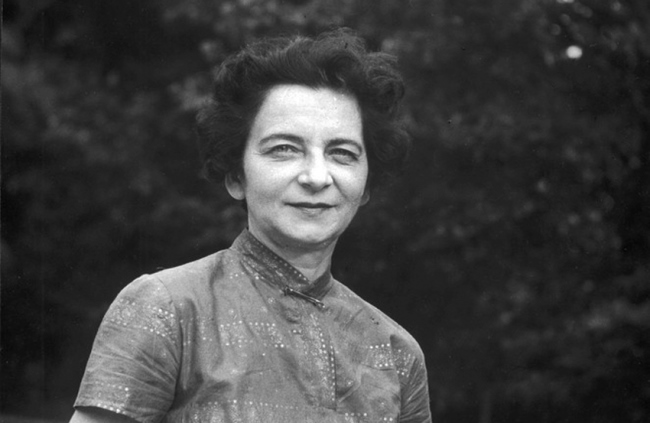Grażyna Bacewicz, Music for Strings, Trumpets, and Percussion
By Peter Laki
Born February 5, 1909 in Łódź, Poland
Died January 17, 1969 in Warsaw, Poland
Composed in 1958
Premiered in 1959 at the Warsaw Autumn Festival
Performance Time: Approximately 19 minutes
Upon hearing the words Music for Strings…and Percussion in the title of a composition, one immediately thinks of Bartók’s masterpiece from the year 1936, where the missing word in the title is completed by ‘celeste.’ Bartók’s music found a particularly strong resonance in postwar Poland where, in 1958, Witold Lutosławski composed his Funeral Music in memory of Bartók. The very same year, Grażyna Bacewicz, a celebrated composer and violinist, presented her own Music for Strings, which calls for no fewer than five trumpets in addition to the strings and percussion, although Bartók’s celeste was also retained as part of the percussion section.
Stylistically, Bacewicz owes little or nothing to Bartók, although her music, too, is full of rhythmic vitality and builds upon the contrasts between “wild” ostinatos and lyrical, melodic moments. Traces of neo-classicism may be found in the use of concerto grosso-like juxtapositions of solo instruments and larger groups, but Bacewicz avoids associations with earlier music and follows an essentially modernistic path.
The three-movement composition, which Bacewicz herself included among her best works, opens with a complex texture of agitated sixteenth-note figures in the strings, against which the five trumpets enter with their striking and pungent harmonies. Soon, the ensemble breaks up into groups of soloists (violins, cello, celeste), introducing a second idea consisting of constant syncopations. A scherzo-like third idea, with fast-moving staccato (separated) notes, gives rise to a new development followed by the recapitulation of the previous two themes, in reverse order. A brief, fanfare-like coda ends the movement.
The slow central movement begins with an eerie ostinato figure with violins playing sul tasto (on the fingerboard), against which a solo viola and a solo double bass sing a mysterious duet that gradually draws in the entire string section. A solo cello suddenly cuts through the multi-layered string texture, and then the muted trumpets add their voices to the mix. A moment of emotional upsurge, with the trumpets removing their mutes, suddenly morphs into its opposite: a section with mysterious trills and isolated celeste attacks, a kind of “night music” to end this unique Adagio.
The concluding “Vivace,” where the xylophone is heard for the first time, bursts with energy and brings back some motivic elements from the first movement (sixteenth-note runs, light-footed staccato figures), investing them with new sense of excitement. A second, more melodious but still rhythmically driven section begins with some of the violins and violas playing col legno (with the wood of the bow). This vibrant and wholly unpredictable music includes some ferocious drum solos, a brief solo for string quartet with two cellos, and a dash to the surprise ending.
Music for Strings, Trumpets and Percussion has been successfully choreographed several times over the years, in London, Paris, and The Hague. In 1960, it won a prize in Paris at the UNESCO International Tribune of Composers. It was dedicated to conductor Jan Krenz, who led the first performance at the 1959 Warsaw Autumn Festival.
Peter Laki is Visiting Associate Professor of Music at Bard Conservatory of Music.

